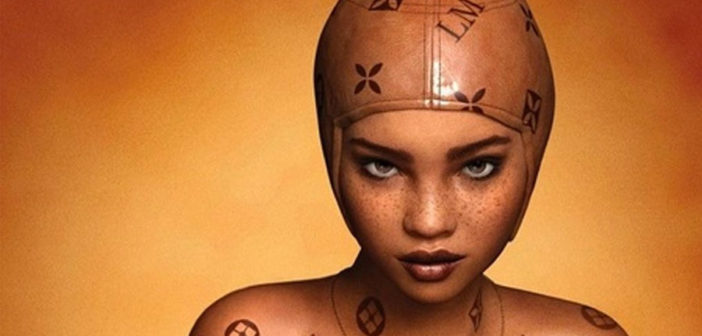From the FTC’s reinforced regulations and CAP’s guidance to the increase in artificial Instagram pods – the world of influencer marketing seems to have been riding a wave of scepticism in the last year.
Now, a new phenomenon has cropped up, which hasn’t done much to help perceived authenticity within the industry. It’s mainly down to Lil Miquela – a virtual/CGI influencer with an impressive 600,000 followers on Instagram.
But who is behind Lil Miquela, and what is her purpose?
More to the point, will virtual influencers be the next big thing for influencer marketing? Here’s more on the story so far.
Who is behind Lil Miquela?
Miquela Sousa fits the typical bill of an Instagram influencer. She is a 19-year-old model of Brazilian and Spanish descent, currently living in Los Angeles. A real ‘fashionista’, her Instagram feed is filled with designer ‘outfit of the day’ posts. She’s also a keen musician, having released a number of her own songs on Spotify.
The only real distinction – she’s fake. Though she is the brainchild of someone clearly very dedicated to keeping the illusion alive.
So far, there’s no real concrete evidence as to who her creator actually is. When she first appeared on Instagram back in 2016, the main theory was that she was part of a large-scale advertising campaign, with some suggesting that it was a clever plot by The Sims.
However, there’s no been no sign of brand involvement since, only further reports that she’s the invention of various digital artists and animators.
Creating a virtual community
One of the most interesting things about Lil Miquela is the extent to which she blurs the lines between reality and fantasy. She’s not just a voiceless face, as she (or whoever is behind her) is very active online, typically replying to comments, DMs, and even partaking in media interviews.
There’s also the fact that she alludes to her virtual identity, recently telling Business of Fashion that she’d ‘like to be described as an artist or a singer or something that denotes my craft, rather than focus on the superficial qualities’.
So what is her ‘craft’ exactly? Well, the same as any other influencer it seems. And in some ways, Lil Miquela feels more ‘authentic’, even expressing deeper personality than her real-life counterparts.
Unlike personalities that project a one-sided image, Lil Miquela uses her channel to post content relating to social and political issues – she’s shown support for causes including Black Lives Matter, DACA, and transgender rights to name a few. She also posts about humorous and relatable scenarios, commenting on pop-culture and expressing admiration for celebrities.
So, does it matter that she’s not real? For her hundreds of thousands of followers, the answer appears to be not really. After all, they get from her the same (if not more) than they do as other influencers. Even the chance to buy Lil Miquela merchandise, albeit without the opportunity to meet in person at a launch or event.
There’s also just the fascination and added mystique that comes along with someone who appears so human, but who actually isn’t. The film ‘Her’ springs to mind.
Modernising an old strategy
While CGI influencers might be a new phenomenon, virtual celebrities have in fact been around for years, with examples including the band Gorillaz and Japanese singer Hatsune Miku.
Lil Miquela isn’t the only modern example either. Recently, beauty brand Fenty re-posted a photo of virtual model Shudu Gram, generating massive interest in photographer Cameron-James Wilson’s latest creation.
While there has been some negativity towards the use of a virtual model – with some saying that it promotes the dilution and distortion of real images – others have suggested that it is the natural next step in a world that’s already characterised by filters and perceived ‘perfection’.
What does it mean for brands?
Lil Miquela’s rapid rise to Insta-fame poses a big question for brands and publishers. Does it matter if an influencer is fake if they have the same ‘influence’ as someone who is real?
I don’t think it necessarily does, mainly because the problem within influencer marketing is largely to do with misleading content. For example, if an influencer is being paid to promote a product but fails to disclose it, or worse – lies about it. This is when audiences feel like they’re being scammed, ultimately leading to negative sentiment towards the brand and influencers involved.
In contrast, if virtual influencers are transparent – with no pretence that they’re actually real – there’s no reason why brands shouldn’t feel comfortable partnering with them or using them in campaigns.
Similarly, it might be a case of whether or not the influencer’s identity (virtual or not) fits in with that of the brand’s. In the case of Fenty, which typically promotes the values of diversity, creativity, and expression, the image doesn’t seem too out of place in its feed.
In terms of consumer reaction, it also helps that we are becoming more and more used to technology within the context of everyday life. From chatbots to digital assistants like Siri and Alexa, we’re already used to interacting with fictional characters, and more importantly, we’re being influenced by what they tell us.
Lastly, virtual influencers could also mean greater control for brands, with partnerships resulting in less danger of scandals or controversy. What’s more, if they begin to create their very own influencers, this control could be taken to another level. Essentially, brands would be able to create an ideal representation of what it is they stand for, and a spokesperson that their audience is most likely to identify with.
–
This article first appeared in www.econsultancy.com
Seeking to build and grow your brand using the force of consumer insight, strategic foresight, creative disruption and technology prowess? Talk to us at +9714 3867728 or mail: info@groupisd.com or visit www.groupisd.com







